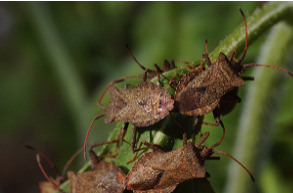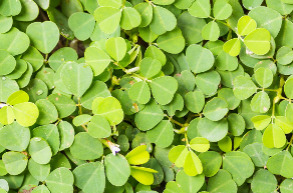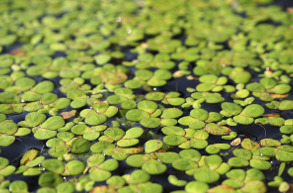Chamberbitter Control
Most Effective Products
Chamberbitter Control: How to Get Rid of Chamberbitter
Chamberbitter, also popularly known as Gripeweed, is an increasingly common invasive weed that has been spreading heavily across regions of the country with more tropical climates. Chamber bitter is a broadleaf weed that sprouts on warm-season grasses annually during the early summer. It is believed that the weed originated in tropical Asia, but it has become a major lawn pest across the southeastern United States from Virginia to Texas.
Chamberbitter tends to prefer growing in conditions where there is excessively high temperatures or areas where there are long periods of drought. Because Chamberbitter is drought tolerant and produces so many seeds, it's quite a difficult to control weed on landscapes.
If you are having a problem with Chamberbitter, we can help. Our DIY Chamberbitter control guide was developed by our team of lawn care experts to show you exactly what you need to kill Chamberbitter and remove it from your yard quickly and affordably.
Identification

Before you can proceed with control of Chamberbitter, you need to make sure that is the weed you are dealing with. Misidentifying a weed can lead to using the wrong herbicide which may be ineffective in treating it, costing you time and money. Here are the traits of Chamberbitter to look for to properly identify it.
- Chamberbitter looks very similar to the leaves of a mimosa tree and is a member of the spurge family. It goes to seed when it is only about an inch tall and the seeds are actually little balls that develop on the underside of the leaves.
- Chamberbitter is a slender shrub with alternate leaves that are oblong to almost linear.
- The stems often branch and can be reddish colored. When they have matured, Chamberbitter can develop a deep taproot which makes this weed particularly difficult to completely remove without the help of chemicals.
Use the above description and image to help you in properly identifying carpetweed. If you are having trouble, you can always contact us and our lawn care experts will help to correctly ID your weed growth and suggest treatment options.
Inspection

After you have properly identified Chamberbitter, you can proceed with inspection. During this phase, you will need to locate where Chamberbitter is growing, how severe of an infestation is present and the conditions helping it to thrive. Finding this info will help you in knowing where to focus your herbicide application.
Where to Inspect
Chamberbitter is a warm-season broadleaf annual and usually springs up around May or June when the soil temperatures have warmed to approximately 70 oF. It spreads by seeds that are located on the bottom side of the branch. Ornamental beds and turfgrass are the two most common places to find Chamberbitter.
What to Look For
Chamberbitter grows upright and possesses a well-developed taproot. The leaves are arranged in two rows on the branchlets and are thin and oblong, with smooth margins, resembling a mimosa seed. When mowing Chamberbitter, the seeds can explode and spread everywhere over a large area. If you were able to find chamberbitter and break the stem, a milky white sap would ooze out from the stem, much like other spurge species.
Treatment
Chamberbitter is a difficult plant to control for various reasons. It grows quickly, can tolerate drought and manual methods of control are not effective because of the seeds which explode spread around everywhere and the extensive taproot which makes hand-pulling a largely useless option because they will just pop up again before long.
Before using any herbicide product, make sure you first have on the proper personal protective equipment (PPE) for safety (gloves, glasses, mask).
A pre-emergent like Isoxaben 75WG would be best so you don't have to deal with the plant in the first place. Apply 0.38 oz. or 10.5 grams of product per 1,000 sq. ft. For acerage applications, apply 1 lb. of Isoxaben 75WG per acre.
Post-emergently, we recommend controlling Chamberbitter with Celsius WG. Since Chamberbitter is such a stubborn weed, reapplications may be necessary. Celsius WG is selective meaning it will be harmful to the plant you are targeting while providing little to no effect to desirable plants surrounding the weed.
Step 1: Mix and Apply Celsius WG

Calculate the square footage of the treatment area to determine how much Celsius WG you will need. To do this, you will need to measure and multiply the area length times the width (length x width = square footage). Celsius WG should be mixed with a gallon of water at the rate of 0.085 oz. (2.4 g) in a gallon of water per 1,000 square feet. Mixing Celsius WG with a surfactant like Alligare 90 will help the product to stick better to the weed and make the herbicide work more effectively.
For example, if you have a 2,000 sq. ft. area to treat, you will need to mix 0.17 oz. in 2 gallons of water. Once you have made your measurements and calculated how much Celsius WG you need, mix the product and surfactant with the appropriate amount of water in a handheld or backpack sprayer. Shake the sprayer to ensure the solution is well-mixed and then you're ready to spray.
When applying, change the nozzle setting to a fan nozzle so it will spray a fine mist on the plant and get an even coating on the Chamberbitter.
Step 2: Reapply As Needed

Unfortunately, given how persistent and pesky Chamberbitter is, there is no one and done solution to take care of the weed so keep in mind that repeat application may have to take place in order to fully kill the invaders.
If a second application is needed, apply the herbicide in spot treatments. Repeated applications of Celsius WG should be spaced at 4 to 6 weeks after first treatment. Be careful applying in the heat and just spot treat the area so you don't burn your grass.
Do not apply more than a total of 7.4 oz. (210 g) of product per acre (0.17 oz. or 4.8 g of product per 1,000 sq. ft.) per year (365 days).
Prevention

After you have eliminated the Chamberbitter, you don't want it to come back. Chamberbitter requires a combination of mechanical, cultural and chemical methods to get rid of the weed and keep it away.
- Make sure you keep a good schedule with mowing, watering and feeding your turf so it is healthy and nutrient-rich, making it better equipped to choke out any invasive weeds that want to establish themselves.
- Pre-emergent applications of Isoxaben in the spring can help to keep Chamberbitter from making a return and also mulching can help. As long as you are persistent in your efforts to keep Chamberbitter from coming back.
Key Takeaways
What is Chamberbitter?
- Chamberbitter is a frustrating lawn weed that thrives in tropical conditions.
How To Get Rid of Chamberbitter
- We recommend a treatment of Celsius WG for post-emergent control or Isoxaben for pre-emergent control to get rid of Chamberbitter.
Preventing Chamberbitter Reinfestation
-
To prevent Chamberbitter, implement proper cultural practices such as watering, mowing and feeding to make your yard less conducive to Chamberbitter establishment.
























































































































































































































































































































































































































































































































